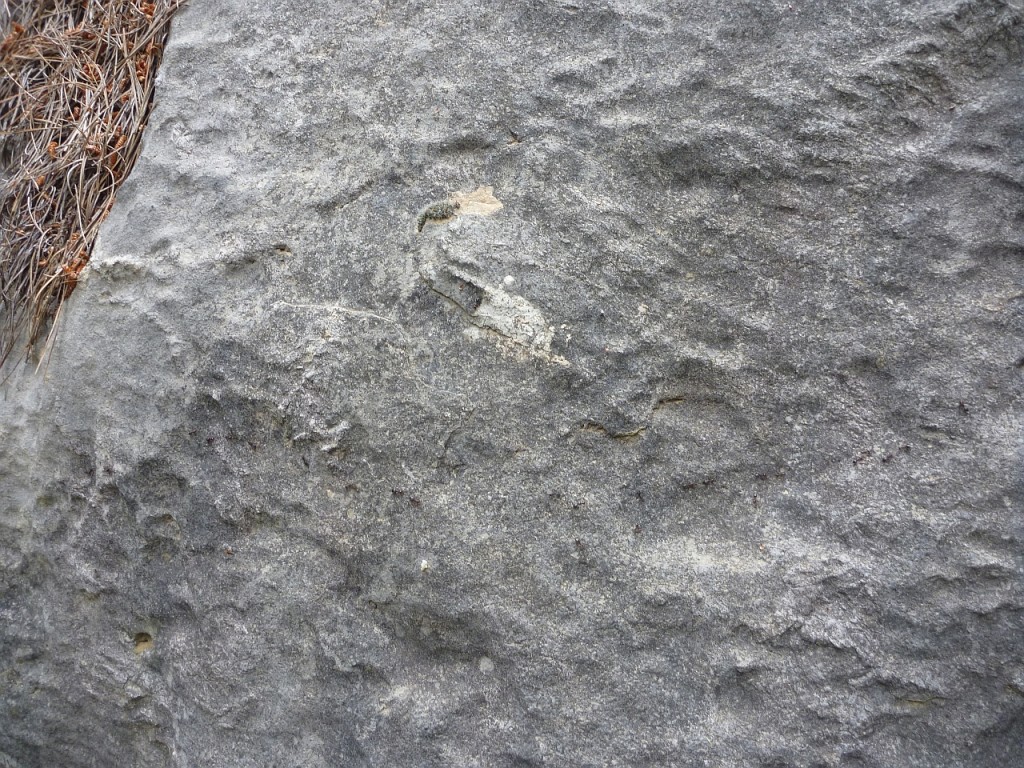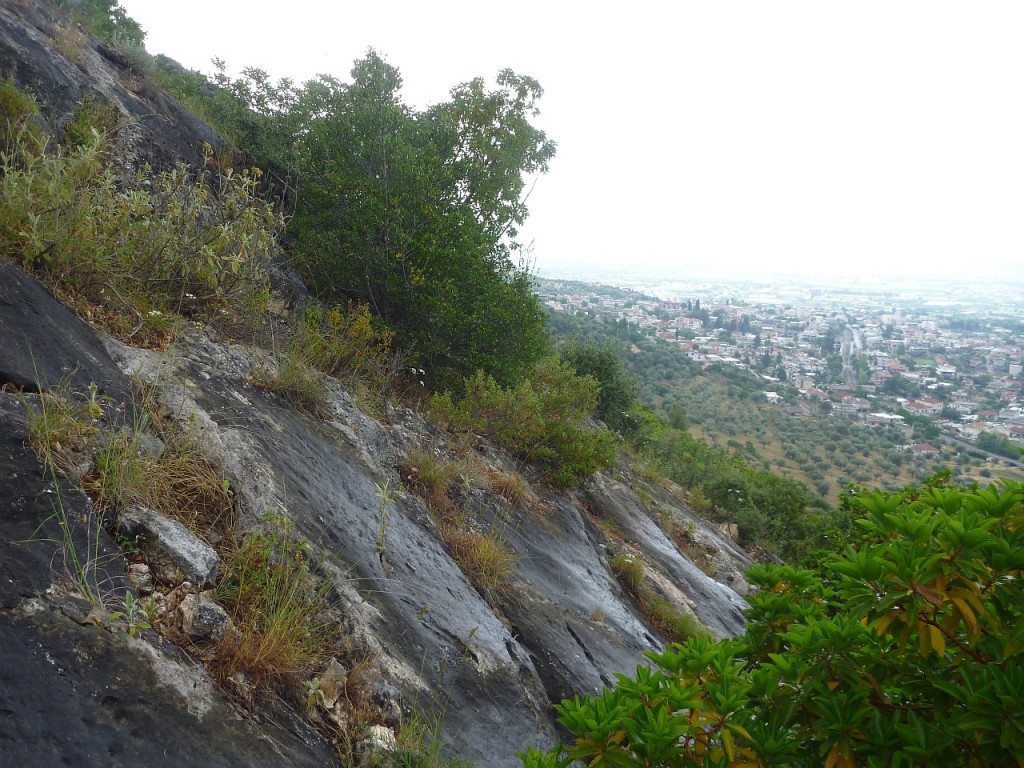Today we went for field work again – mapping active faults in Northern Attica, trying to find out about offsets and slip rates, and scouting sites for applying Ground Penetrating Radar (GPR) later. We found some very beautiful fault scarps and measured a good number of strike and dip values. At two locations we also recorded topographic profiles across the scarps in order to get an idea about the vertical offset. Combined with the assumption that these scarps are post-glacial, we can estimate slip rates. Of course one needs to be sure that the visible fault scarp height is not affected by erosion or sedimentation, which would result in too high or too low values, respectively. And whether or not all the Mediterranean scarps are really post-glacial (means: developed since the last glacial maximum [LGM]) is another point to discuss.
After all, today was a good day! We had some rain, which caught me as a surprise because I thought I would have 30° and sunshine all the time, but from earlier campaigns I should have known that sunny Greece can be cold, windy and rainy, too. So, we all were completely washed. Plus, we met some nice creatures. I like some of them, but to be honest, I am not angry if spiders keep a security distance. So field work is not only fighting the macchia and getting to know all the spiny plants, it’s also trying to avoid spiders, ants, and other nice little friends.

No more Mr Nice Guy. This turtle toirtoise tortoise was resting right on the fault plane!

This snail slug tries to climb the fault gauge.
















No Comments
No comments yet.